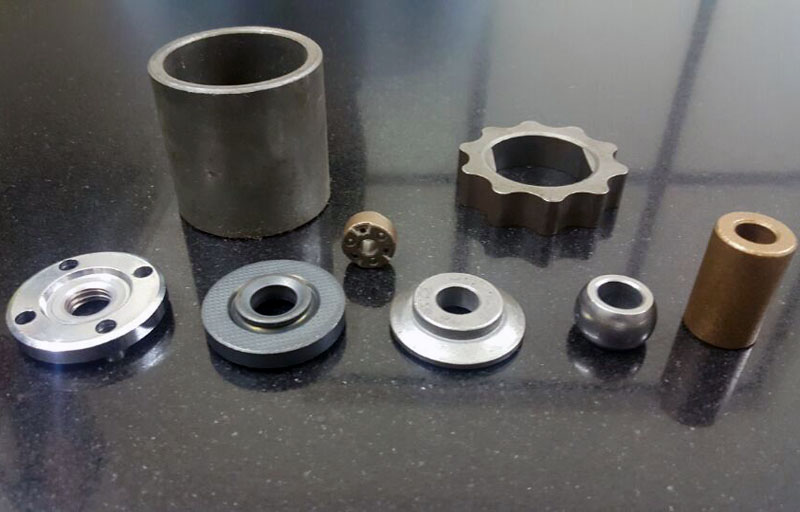Analysis of influencing factors of heat treatment of powder metallurgy materials
Nov. 15, 2023
1)The influence of pores on the heat treatment process
During heat treatment of powder metallurgy materials, rapid cooling inhibits the diffusion of austenite into other structures, thereby obtaining martensite, and the existence of pores has a greater impact on the heat dissipation of the material. Through the thermal conductivity formula: thermal conductivity = theoretical thermal conductivity of metal × (1-2 × porosity) / 100
It can be seen that the hardenability decreases with increasing porosity. On the other hand, pores also affect the density of the material. The effects on the surface hardness and hardening depth of the material after heat treatment are related to the density effect, reducing the surface hardness of the material. Moreover, due to the existence of pores, salt water cannot be used as a medium during quenching to avoid corrosion caused by residual salt. Therefore, heat treatment is generally performed in a vacuum or gas medium.
2)The effect of porosity on surface hardening depth during heat treatment
The heat treatment effect of powder metallurgy materials is related to the density, permeability (quenching) permeability, thermal conductivity and resistivity of the material. Porosity is the biggest cause of these factors. When the porosity exceeds 8%, gas will quickly penetrate through the gaps. When carburizing and hardening, increasing the carburizing depth will reduce the surface hardening effect. Moreover, if the carburizing gas penetrates too fast, soft spots will be produced during quenching, which will reduce the surface hardness and cause the material to become brittle and deformed.
3) Effect of alloy content and type on powder metallurgy heat treatment
Common alloying elements are copper and nickel, and their content and type will affect the heat treatment effect. The heat treatment hardening depth gradually increases with the increase of copper content and carbon content and gradually decreases when it reaches a certain content; the stiffness of nickel alloy is greater than that of copper alloy, but the uneven nickel content will lead to uneven austenite structure.
4)Effect of high temperature sintering
Although high-temperature sintering can achieve the best alloying effect and promote densification, differences in sintering temperature, especially at lower temperatures, will lead to a decrease in sensitivity to heat treatment (reduction of alloy in solid solution) and a decrease in mechanical properties. Therefore, using high-temperature sintering, assisted by a sufficient reducing atmosphere, can achieve better heat treatment effects.










